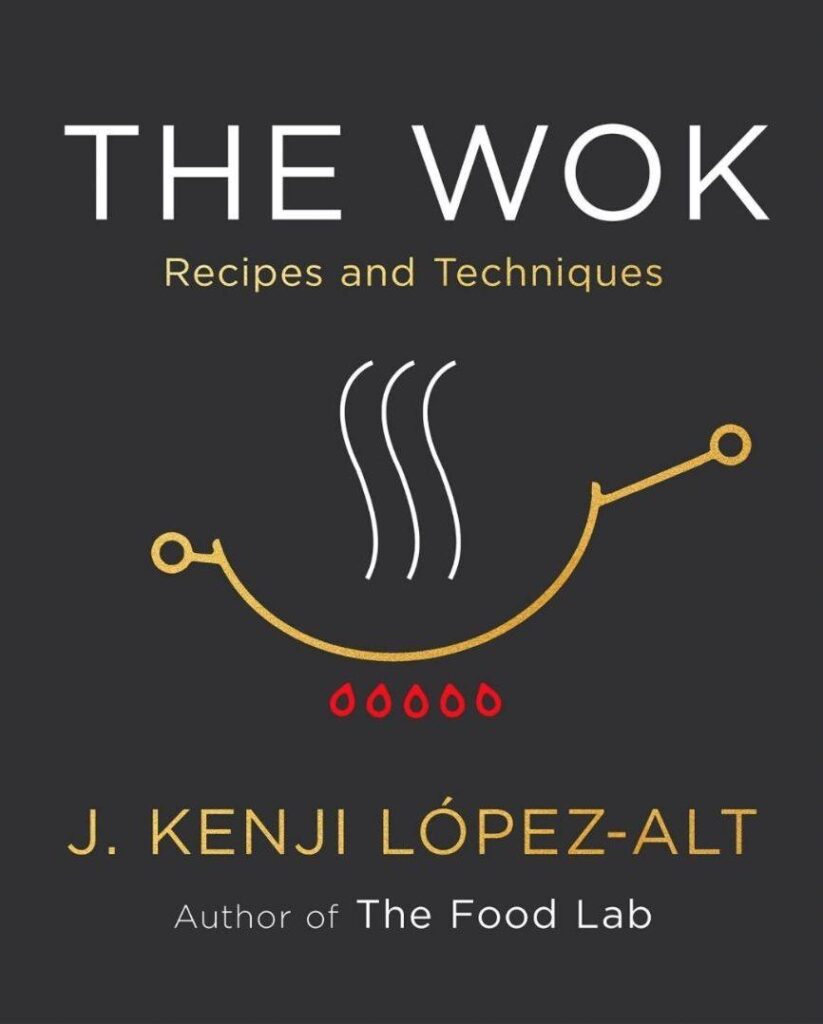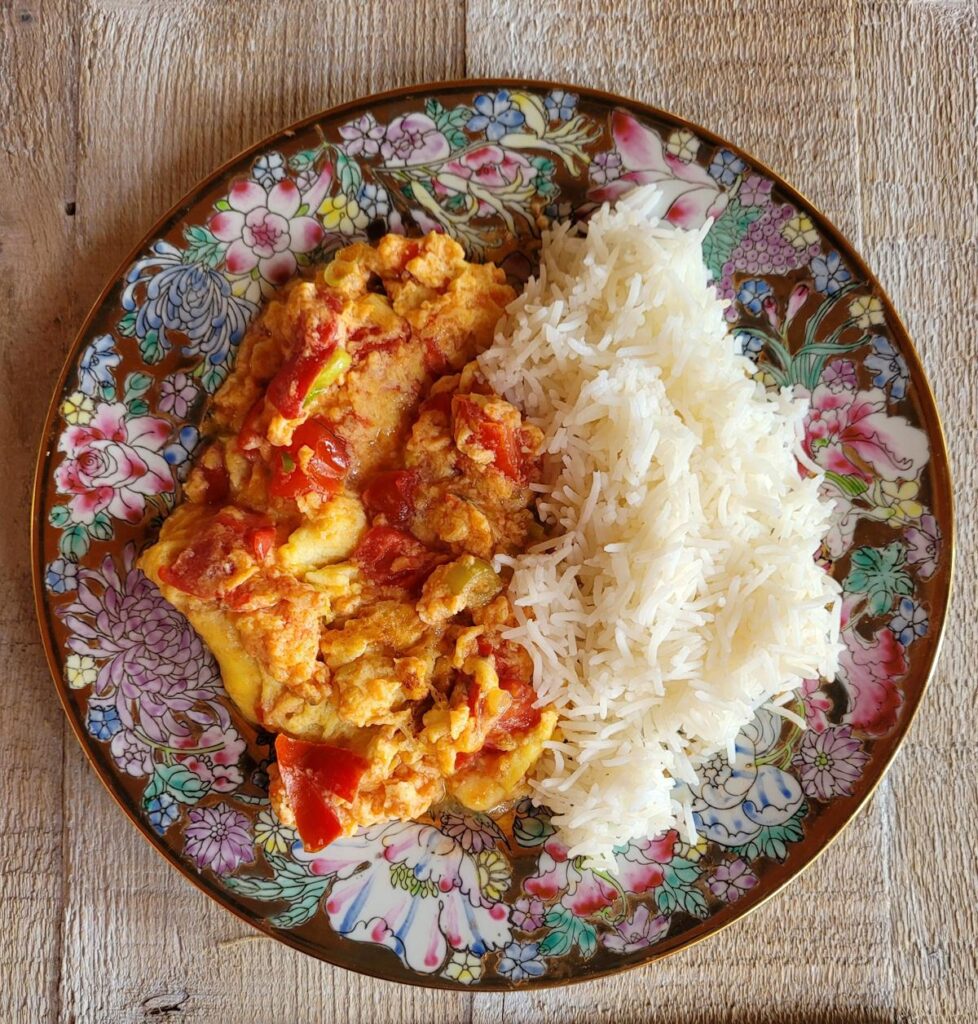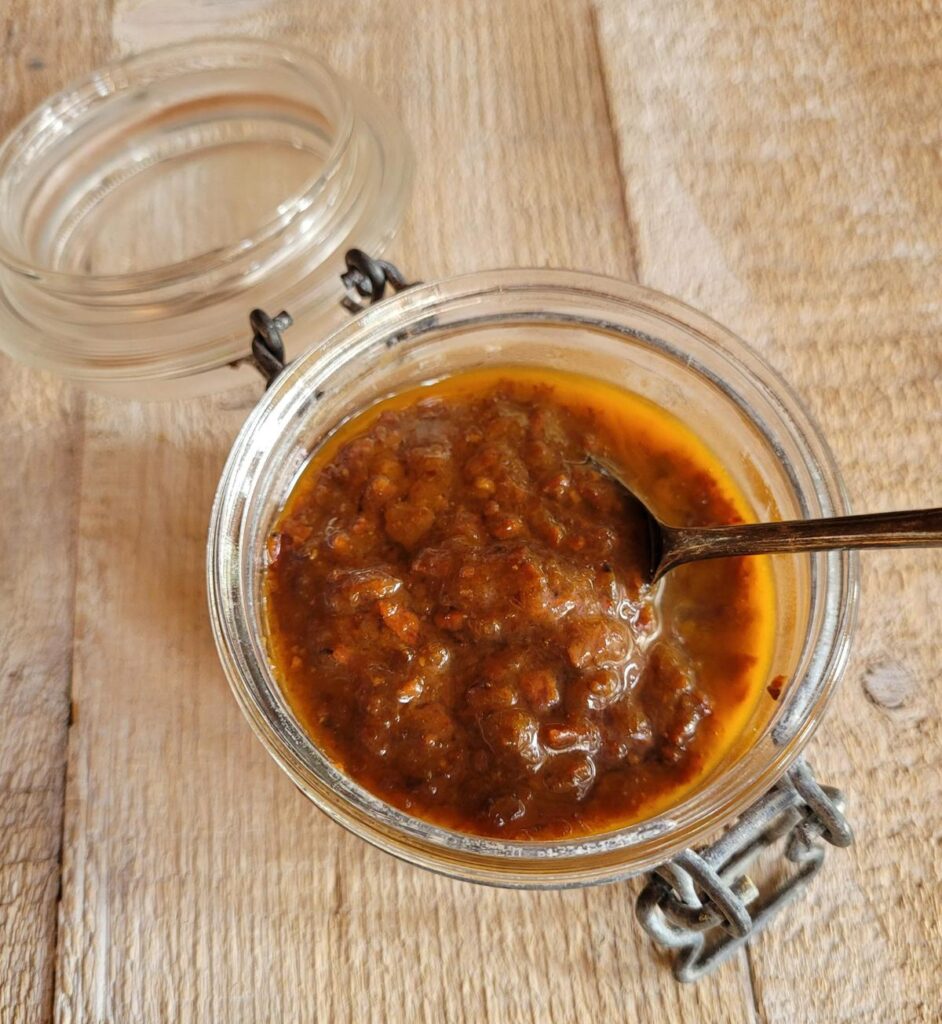
The first thing I did after receiving my copy of López-Alt’s new book was to purchase a wok (the one I owned in my student days long since gone). I opted for a spun carbon steel model with a flat bottom after reading about the comparative merits (specific heat capacity, density, volumetric heat capacity, conductivity and reactivity) of the various metals used in the manufacture of the Chinese cook’s indispensable pan.
If this all sounds rather geeky, it is. López-Alt is a self-described “cook with a penchant for science” and there is plenty of that in this book. But the really nerdy stuff is contained in sidebars which can be ignored if you so choose. But what cannot be ignored, if you are to get the most out of this cookbook, are the discussions of technique that precede each recipe. The Wok is a teaching book, a manual designed to equip the reader not just with recipes but with the knowledge and skills to cook Asian dishes creatively and independently.
López-Alt (“Kenji” to his legion of fans) has a cult following in the on-line culinary community. He rose to prominence via a food science column he penned for the website Serious Eats. His combination of solid scientific background, quick wit and personable style garnered him a multitude of acolytes and spawned an award-winning first cookbook, The Food Lab.
I lived in Asia for 20-plus years and am no stranger to the magic that can emerge from a wok, and the elusive, smoky flavour of wok hei (“Breath of the Wok”) created by tossing ingredients in an intensely hot pan licked by flames. It would be pointless, I thought, to try and achieve this at home, and why bother when there’s an expert just down the road?
But now I live in Canada.
While I waited for my work to arrive, I read the section on pantry ingredients, which is sensibly divided into categories according to importance, making it easy to assemble the basics you’ll need to get cooking. Hacks and substitutions are suggested for some more obscure ingredients and there are brand recommendations to help sort the good from the bad within the often extensive array of products available in Asian supermarkets.
I also studied the section on knife skills, which provides instructions for slicing vegetables and proteins in ways that render them suitable for stir-frying, the primary technique for which the wok is designed. While the focus of the book is mainly on this form of cooking, there are many recipes that employ other methods (braising, poaching, deep and shallow frying etc) that demonstrate the versatility of the wok as a cooking utensil.
I tried a lot of recipes while reviewing this book and rather than describe each in detail, I think it’s more useful to tell you what I learned.
From the chapter How to Stir-Fry Eggs, Tofu, and Vegetables I made Chinese Broccoli with Oyster Sauce, a simple dish involving a single vegetable and a flavourful sauce. I learned the importance of blanching vegetables before stir-frying, also that I can do this in batches ahead of time, and that contrary to accepted wisdom, there is no need to follow blanching with an ice bath. There are many instances in the book where López-Alt challenges established culinary conventions, and his tips, tricks and hacks invariably result in time-saving efficiencies and short cuts.
From the same chapter, Simple Panfried Tofu with Soy-Garlic Dipping Sauce taught me how to dry the surface of slabs of tofu before frying by pouring boiling water over them and letting them air dry for a few minutes, a technique that seems counter-intuitive but, as López-Alt explains, has a sound scientific basis. My eaters were delighted with the crispy texture of the tofu, as well as its lip-smacking sauce.
I made Home-Style Tomato and Scrambled Eggs twice, because the sweet-tart-savoury eggs with their silky texture were so delicious. The secret here is the addition of a cornstarch slurry which turns the watery tomato component into a smooth and velvety sauce.
A similarly simple-but-delicious home-style Japanese dish is Tamago-Kake Gohan from the chapter on Rice Bowls. This is nothing more than left-over rice with an egg whisked in (seasoned with a little soy sauce). But the magic is in the whisking which, López-Alt explains, incorporates air and causes the egg proteins to stretch and tangle, creating a creamy, risotto-like texture.
From How to Stir-Fry Seafood I made Stir Fried Fish with Ginger and Scallions, here learning about the technique of water-velveting a protein (marinating in a flavoured cornstarch mixture then briefly immersing it in simmering water) before stir-frying, which creates texture and prevents delicate flesh from falling apart during cooking.
Crispy-and-Saucy recipes, the Chinese American Way led me to Korean-style Spicy Braised Tofu, a supremely tasty dish that began again with pre-treatment of the tofu, and demonstrated how the browned flavours and crisp textures created by frying are balanced by a brief braise in simmering liquid.
More on Simmering and Braising with Poached Chicken and Cabbage Salad with Cashews and Miso Dressing; Bang Bang Chicken; and Sesame Chicken Noodles My Way. These dishes were prefaced with a lesson “How to poach chicken safely,” with tender, juicy results. I share the author’s preference for serving poached chicken cold and these three dishes are superbly tasty ways to do just that.
Bang Bang Chicken is doused in something called Mysterious Flavor Sauce, which highlights another of López-Alt’s singular talents. Not only is he a master of technique, he is also a maestro of flavours. Many of the dishes in this book are simply cooked proteins or vegetables, dressed with a deeply savoury sauce. There are many sauces and condiments in the book that will find a permanent place in my repertoire but one stands above all. I’m not sure if Umami Oil (aka “XO Pepperoni Sauce”) can even be legal, it is so unctuous and addictively delicious.
Everyone, I think, loves Noodles and that chapter contains one of the most useful hacks in the book for those who don’t have easy access to fresh Asian pasta. By cooking regular dry spaghetti with baking soda, you can have springy ramen noodles any time you want. (Camping trips will never be the same!). Using this method I made Noodles with XO Pepperoni Sauce, (that Umami Oil) which was so delicious one taster described it as “a near religious experience.” I used the same noodle hack to make Chinese-Style Lo Mein with Oyster Sauce, Lettuce and Butter, a clever dish that conjures magic from just five ingredients.
I am without doubt a more accomplished cook after paying close attention to the lessons outlined in The Wok. It is impossible to do justice to the extraordinary wealth of knowledge contained in the book within the scope of this review. There are sections that I haven’t touched upon — Thai curries, Vietnamese braising in fish sauce caramel, Japanese dashi stocks, rice cookery and congee – for example, that will keep my wok busy for months to come. Suffice to say that as a teaching manual López-Alt’s second opus is excellent; accessible enough for interested beginners but also packed with erudition that will excite more experienced cooks wanting to elevate their game.
And if you thought that wok hei was the exclusive preserve of Chinese restaurant chefs conjuring with flames, Kenji will show you how to do it using a kitchen blow torch. Brilliant.
See all of our cookbook reviews on Pinterest!




